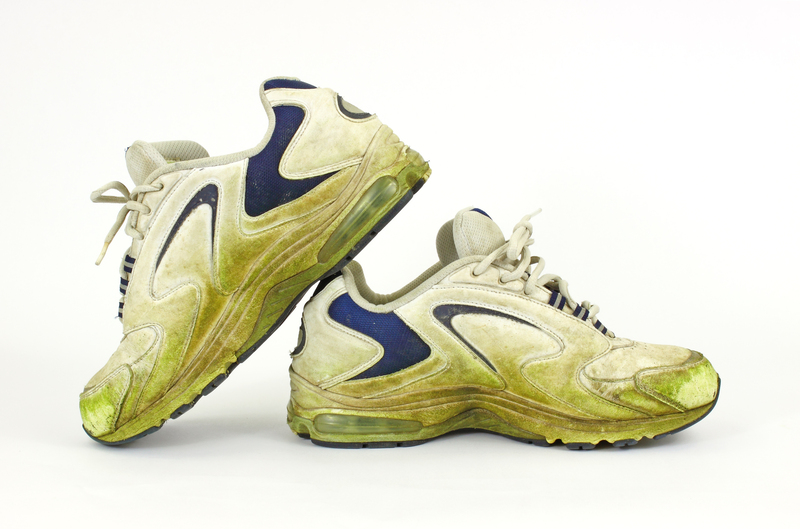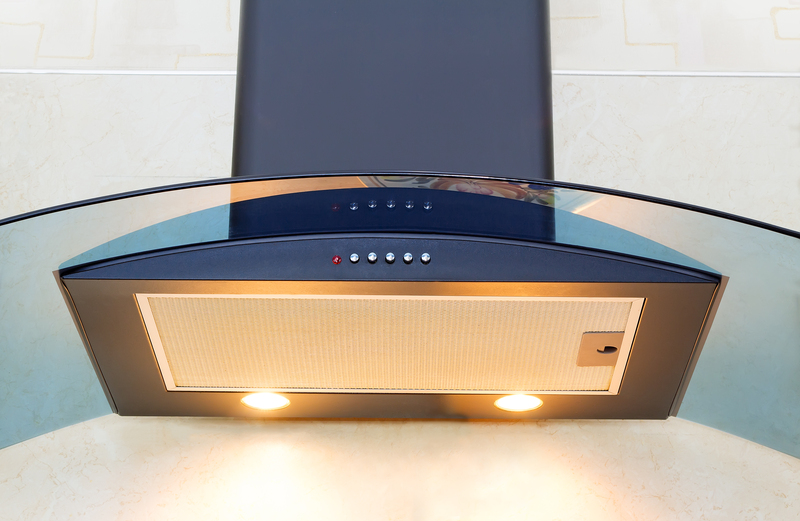Conquer Stubborn Stovetop Burnt-on Marks Easily
Posted on 20/09/2025
Conquer Stubborn Stovetop Burnt-on Marks Easily: The Ultimate Guide
Stovetop cleaning is no one's favorite chore. Yet, nothing disrupts a pristine kitchen like grimy, stubborn burnt-on marks that refuse to budge. Whether you're a casual cook or a culinary enthusiast, learning how to remove burnt-on stains from stovetops can save time and keep your kitchen sparkling. In this comprehensive guide, we'll reveal proven techniques and household remedies to help you conquer stubborn stovetop burnt-on marks easily--and prevent them from coming back!

Understanding Stubborn Burnt-on Marks on Your Stovetop
Before jumping into cleaning solutions, it's important to understand why stovetops get burnt-on marks in the first place. Stovetop stains commonly come from:
- Boiled-over liquids
- Grease splatters
- Food residue left over during cooking
- Sugar spills that caramelize and harden
When these substances are exposed to high heat, they carbonize and adhere to the stovetop surface, creating those hard-to-remove burnt marks we all despise.
Types of Stovetops & Why It Matters
Before you begin, identify your stovetop type:
- Gas stovetops: Feature removable grates and burners.
- Electric coil stovetops: Feature metal heating elements.
- Glass or ceramic stovetops: Known for their smooth, flat surface.
Differentiating your stovetop is vital, as certain cleaning methods and products may suit one variety but damage another. Always consult your manufacturer guidelines before using abrasive materials.
Why is it Important to Remove Burnt-on Stovetop Marks?
Ignoring stubborn burnt-on stains doesn't just affect your kitchen's aesthetics--it also:
- Decreases cooking efficiency: Built-up debris can affect heat distribution.
- Reduces appliance lifespan: Continuous carbonization may damage burners.
- Creates a fire hazard: Grease and carbon deposits are highly flammable.
- Invites bacteria: Old food particles harbor germs.
To keep your kitchen safe, sanitary, and efficient, it's best to act quickly and confidently when handling stubborn burnt-on stovetop stains.
Step-by-Step Cleaning: How to Remove Stubborn Burnt-on Stovetop Stains
Ready to conquer those stubborn stains? Here's a step-by-step guide to tackle even the toughest, burnt-on stovetop marks with ease.
1. Let the Surface Cool Completely
Safety first! Never attempt to clean a hot stovetop. Turn off all burners and wait until they are entirely cool to avoid burns or injuries.
2. Remove Grates and Burner Caps (if applicable)
Carefully lift away any removable parts, such as grates or burner caps, and set them aside for separate cleaning.
*Tip*: Soak these parts in a sink filled with hot, soapy water to loosen stubborn residues.
3. Wipe Away Loose Debris
Use a dry paper towel or microfiber cloth to sweep away loose crumbs and surface debris. This step prevents scratching during deeper cleaning.
4. Apply Your Chosen Cleaning Solution
There are several effective solutions for removing burnt-on marks. Whether you prefer natural remedies or commercial cleaners, here are your best options:
a. Baking Soda and Vinegar--The Dynamic Duo
- Sprinkle a generous amount of baking soda over the affected area.
- Pour white vinegar into a spray bottle and spray over the baking soda.
- The mixture will fizz, helping to lift stubborn grime as it breaks down carbonized food deposits.
- Let it sit for at least 15-20 minutes for best results.
b. Dish Soap and Hot Water
- Mix a few drops of dish soap in a bowl of hot water.
- Dip a sponge or cloth into the solution and cover the stain in circular motions.
- This is especially safe for delicate glass or ceramic stovetops.
c. Commercial Stovetop Cleaners
- Select a cleaner specifically labeled for your stovetop type.
- Apply per package instructions, usually by leaving the product on the stain before scrubbing gently.
- Avoid extra-abrasive scouring powders on glass tops, as these can leave scratches.
d. Specialized Paste for Hardest Stains
- Mix baking soda and a small amount of hydrogen peroxide or water to form a paste.
- Spread it over the burnt marks and let it set for at least 30 minutes.
- Scrub with a non-abrasive sponge or cloth.
5. Scrub with the Right Tools
Once your cleaning solution has had time to work its magic, scrub using gentle pressure and the correct tools:
- Non-abrasive sponges--Ideal for glass and ceramic surfaces.
- Plastic scrapers or razor blades (for glass cooktops)--Hold at a 45-degree angle to gently lift off burnt residue without scratching.
- Soft-bristled brushes--Useful for gas burners and grates.
Pro tip: Never use steel wool or metal scouring pads on glass or ceramic, as they'll leave permanent scratches!
6. Rinse and Wipe Away Residue
Dampen a clean cloth in warm water and wipe thoroughly to remove all traces of cleaner and loosened grime. For best shine, finish with a microfiber cloth.
7. Clean Removable Parts Separately
- After soaking the grates and burner caps, scrub them using a brush and rinse well under hot water.
- Allow to dry completely before placing them back to avoid rust or electrical issues.
8. Final Touch: Polish and Protect
Buff your stovetop to a sheen with a dry microfiber towel. For glass surfaces, a dash of white vinegar on the cloth adds extra sparkle!
Extra Tips to Tackle Especially Stubborn Burnt-on Marks
- For really tough stains, repeat baking soda and vinegar treatment or try an overnight paste application.
- Lime or lemon juice can substitute for vinegar in a pinch--both are acidic and help dissolve burnt-on spots.
- For gas burners and grates, make a paste of dish soap and baking soda. Apply, leave for 20 minutes, then scrub and rinse.
- Steam cleaning with a handheld steam cleaner can loosen stubborn debris without harsh chemicals, especially effective for electric coils and metal surfaces.
Safe, Eco-Friendly Ways to Remove Burnt-on Stovetop Marks
Looking for green alternatives? Many household ingredients are non-toxic and surprisingly effective:
- Baking Soda: Mildly abrasive, deodorizing, and safe for most surfaces.
- White Vinegar: Cuts through grease and dissolves residue with its natural acidity.
- Lemon Juice: Adds a pleasant scent and breaks down carbonized stains.
- Hydrogen Peroxide: Lifts tough stains without harsh chemicals (safe for most surfaces but always spot-test).
Combining these can provide peace of mind for families and those sensitive to strong odors or harsh substances.
When to Use Professional Help or Stronger Cleaners
Occasionally, you might encounter extremely stubborn burnt-on stove stains that home remedies won't remove. In these cases:
- Look for a trusted, stovetop-safe degreasing product, carefully following instructions.
- Contact a professional appliance cleaner if the stain persists and threatens the appliance's integrity.
Remember: Never use oven cleaner or abrasive metal tools on glass, ceramic, or enamel stovetops--they cause irreparable damage.
Preventing Stubborn Stovetop Burnt-on Marks
The best way to avoid dealing with stubborn burnt stains on your stovetop is by taking preventative measures. Make these simple habits part of your routine:
- Clean up spills immediately: Wipe while food is still fresh and easy to remove.
- Use drip pans or liners: Especially convenient for gas and electric coil burners.
- Cook on lower heat: Sudden boils and overflows are less likely at lower settings.
- Deep clean weekly: A regular, thorough scrub prevents carbonized buildup.
- Monitor pots and pans: Avoid letting pots boil dry or spill over.
Making small changes now saves you big cleaning headaches later!

Frequently Asked Questions About Removing Burnt-on Stovetop Marks
Q1: What's the fastest way to remove burnt marks from a glass stovetop?
For glass cooktops, sprinkle baking soda generously on the mark, spray with vinegar, and cover with a damp cloth. Let sit 15 minutes, then gently scrape with a plastic blade. Rinse and polish dry.
Q2: Are there any household items I shouldn't use on my stovetop?
- Steel wool pads (except on uncoated metal grates), oven cleaner sprays, and harsh bleach can permanently scratch or stain stovetops.
Q3: How can I remove old, set-in stains that won't budge?
Apply a paste of baking soda and hydrogen peroxide, leave overnight, and gently scrub. Repeat if needed or try steam cleaning.
Q4: Can I use the same cleaner on both electric coils and smooth-top stoves?
No. Electric coils can handle more abrasive cleaning, while glass and ceramic cooktops require gentle, non-abrasive products.
Q5: How often should I deep clean my stovetop?
Aim for a light wipe-down after every use and a deep clean at least once a week for best results.
Your Sparkling, Stain-Free Stovetop Awaits
Conquering stubborn stovetop burnt-on marks easily isn't just a dream--it's a reality with the right tips and tools. By using natural remedies or stovetop-safe commercial products, scrubbing with proper techniques, and adopting quick preventive habits, you'll keep your kitchen not only looking great but running safely and efficiently. Never let those tough burnt stains build up again--make stovetop care a regular, simple, and stress-free part of your culinary routine!
Share your own stovetop-cleaning victories or favorite tips in the comments below and help others conquer those stubborn stains with ease!




